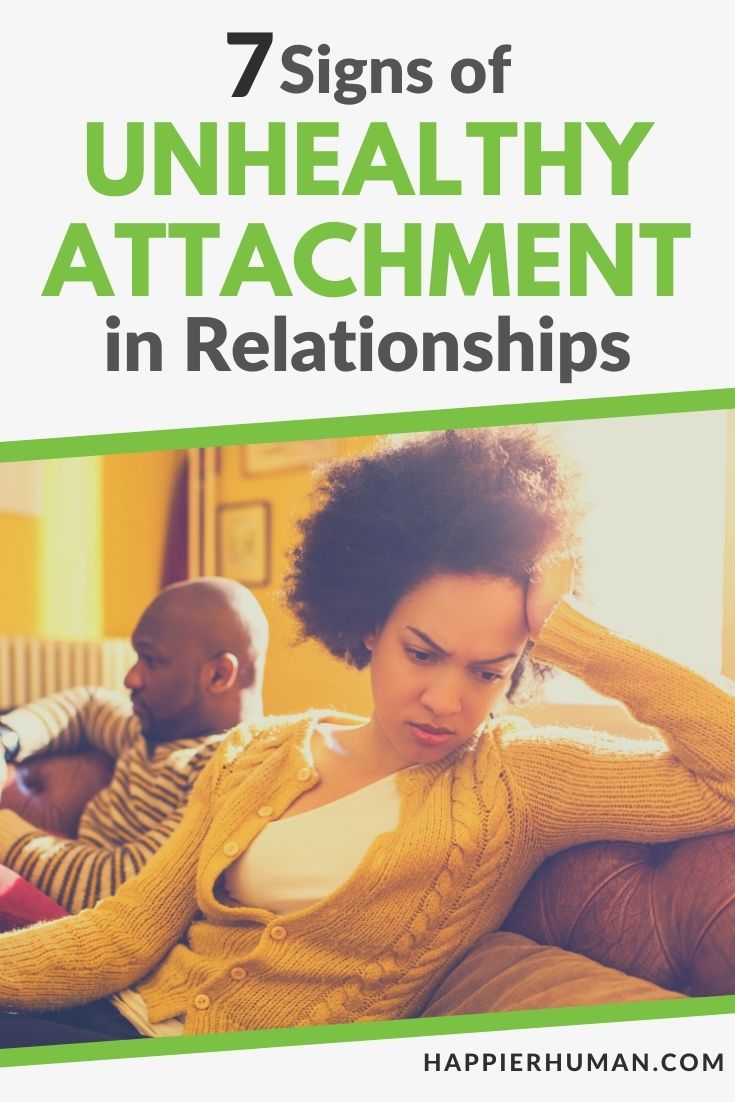There might be affiliate links on this page, which means we get a small commission of anything you buy. As an Amazon Associate we earn from qualifying purchases. Please do your own research before making any online purchase.
One of the universal needs that define human experience is the need for connection.
Whether it’s with family, friends, or a significant other, the attachments you forge throughout life play a fundamental role in your sense of happiness and well-being.
However, the way you look for and obtain these connections is different, depending on the attachment style you developed with your close relatives (attachment figures).
That’s why whenever you’re dealing with unhealthy attachment in your current relationships, the past holds the answer to why you may be struggling with instability, anxiety, and avoidance behaviors.
But don’t go back to your childhood yet.
First, we need to talk about attachment theory and how attachment styles work.
(Side note: One of the best ways to increase your happiness and life satisfaction is to plan your day, so you focus on your TOP goals. To get started, watch this free video that details the 7-minute habit for planning your day to focus on what's important.)
What You Will Learn
- What is Attachment Theory?
- The Four Attachment Styles
- 7 Signs of Unhealthy Attachment:
- 1. You Get Worried If a Friend or Partner Doesn’t Reply Fast
- 2. Your Needs Almost Always Come Last
- 3. You Can’t Picture Your Life Without Your Significant Other
- 4. You’re Constantly Seeking Approval
- 5. You’re Excessively Jealous
- 6. You Avoid Getting Too Close (Emotionally) to Others
- 7. Your Close Relationships ‘Strange’ and Somewhat Overwhelming
- How to Cultivate Healthy Attachment in Relationships
- Final Thoughts About Unhealthy Attachment
- References
What is Attachment Theory?
In essence, attachment refers to a long-term psychological and emotional connection that forms between two or more people.
The first to explore and build upon this concept was British psychologist John Bowlby. Based on his observations while studying children’s behaviour when they spent time away from parents, Bowlby set the foundation for attachment theory.
Attachment theory is one of the most influential theories in developmental psychology. It refers to the need of all individuals to have close ties, both physical and emotional, with other people.
These connections provide feelings of security and stability, which play a crucial role in personality development [1], risk-taking, and survival.
Since humans are social creatures that survive through collaboration and thrive by forging communities, attachment also serves an evolutionary purpose.
Attachment theory focuses on relationships – especially long-term relationships – starting with those between parents and children and reaching all the way to romantic relationships.
As you age, you develop your own attachment style based mainly on attachment patterns learned during childhood.
In other words, you either learn healthy or unhealthy attachment styles depending on your day-to-day interactions with parents, siblings, teachers, or caregivers.
Long story short, your attachment style has a significant impact on how you build relationships during adulthood, consequently influencing your overall sense of happiness and well-being.
The Four Attachment Styles
Attachment is fundamentally an interpersonal connection that facilitates core emotional needs such as attention, acceptance, belonging, security, and comfort.
Therefore, it's essential to discover your attachment style to better understand who you are within social and relational dynamics.
Here are the four attachment styles:
1. Ambivalent/Anxious Attachment
The ambivalent/anxious attachment style develops when parents' attention and affection to the child is inconsistent.
As a result, the child becomes clingy and hyper-vigilant, hoping to remain connected to his parents.
When parents leave, the child with an ambivalent/anxious attachment style becomes worried and agitated; when parents return, he displays an ambivalent attitude.
On the one hand, he is happy to see them; on the other hand, he is angry and desperately tries to claim their attention.
Over the years, this child will grow into an adult who craves closeness but is also afraid others will not meet his emotional needs.
That’s why he will go out of his way to satisfy others’ needs, desires, and emotions, believing he is responsible for their happiness and well-being.
The constant hypervigilance that results from anxiety will lead to instability, conflicts, and mind games designed to keep the other person close.
2. Avoidant Attachment
An adult who develops an avoidant attachment style is a child whose parents are rigid and emotionally distant. In other words, even from an early age, he’s learned to detach to avoid the pain associated with emotional deprivation.
At first glance, the child seems indifferent both when the parents leave and when they return.
However, from a physiological standpoint, the child displays signs of restlessness such as increased heart rate and elevated levels of cortisol (stress hormone).

Over the years, this child will grow into an adult who believes that intimacy leads to a loss of independence. This core belief will prompt him to avoid long-term commitments.
Although he desires intimacy, too much closeness triggers intense anxiety, which prompts him to keep the other person at a comfortable distance.
Furthermore, people with avoidant attachment style draw a clear line between sexual and emotional intimacy. As a result, they are relatively vigilant and often use conflict as a form of separation.
3. Disorganized Attachment
In essence, disorganized attachment is a mix of avoidant and anxious attachment styles.
Experts believe that some of the most challenging and unstable relationships are those where one individual displays anxious attachment while the other shows patterns of avoidance.
Disorganized attachment is the result of absent or emotionally unavailable parents who end up abusing (physically or emotionally) the child.
Think of it this way. Every child seeks comfort and security from their parents, but because they’re also the source of abuse, the child will often run away from them, hence the disorganized aspect of their interaction.
Over the years, this child will grow into an adult who lacks emotional maturity and often reacts aggressively.
Furthermore, individuals who grew up in ‘disorganized’ households find it difficult to trust others and are prone to depression, anxiety, and substance abuse.
People in relationships characterized by disorganized attachment display a chronic lack of open communication coupled with the absence of genuine understanding and empathy.
4. Secure Attachment
The secure attachment style represents a foundation for healthy and stable connections based on feelings of security that the child experiences during his first years.
Because the child feels safe and protected around his parents, their temporary absence doesn’t make him feel anxious or stressed. In fact, as soon as they return, he will most likely display a joyful and playful attitude.
Over the years, this child will grow into an adult who can successfully forge stable relationships based on closeness, intimacy (emotional and/or sexual), warmth, and love.
When relationships are based on secure attachment styles, sexual intimacy flows from emotional intimacy and vice versa.
Furthermore, adults with a secure attachment style can express themselves clearly, communicate empathically, and handle conflicts effectively.
When both partners work towards developing a healthy and secure attachment, the relationship will flourish into a warm and harmonious union.
7 Signs of Unhealthy Attachment:
1. You Get Worried If a Friend or Partner Doesn’t Reply Fast
Today, thanks to advances in digital technology, we are more connected than ever.
Your friends, parents, or life partner are just one call or text away.
On the one hand, the fact that it’s easy to get in touch with someone you care about offers plenty of benefits.
On the other hand, it can also contribute to unhealthy attachments, as you might end up demanding more time and attention from them.
Just because someone doesn’t reply as fast as you think they should, doesn’t mean they don’t care about you, and it’s definitely not a good reason to panic.
2. Your Needs Almost Always Come Last
Take a moment to think about your close relationships, the ones you have with a parent, relative, friend, or significant other.
Do you rush to their aid every time they are in distress or need something?
Do you tend to leave everything aside (even yourself) every time they’re in a bad mood?
Whether you are the one putting your needs last, or they are the ones putting their needs above yours, this dynamic is a clear sign of unhealthy attachment.
3. You Can’t Picture Your Life Without Your Significant Other
In general, people who believe in the “happy ever after” myth or are constantly looking for their “soulmate” tend to develop unhealthy attachments.
Realistically speaking, no one in this world can guarantee that he/she will be with you for the rest of your life.

Furthermore, being with someone you love and care about doesn’t mean your entire life should revolve around this person.
Keep in mind that healthy attachment is built on autonomy, not emotional dependency.
4. You’re Constantly Seeking Approval
We all need a piece of advice when faced with an important decision, and it’s perfectly ok to seek counsel from those who love and support us.
However, feeling unable to decide without seeking reassurance from someone you hold dear can indicate unhealthy attachment.
Usually, approval-seeking comes from a lack of self-confidence or fear of failure.
Because you don’t trust yourself enough to take risks, you postpone your decisions until you get the chance to talk to someone who you think is suited to decide for you.
This dynamic can be a sign of unhealthy attachment, but it can also set the foundation for codependency.
5. You’re Excessively Jealous
In general, people with an anxious attachment style tend to be overly jealous.
But jealousy can take on many forms. For example, maybe you keep checking your partner’s phone because you think he/she might talk to someone else.
Or perhaps you’re constantly asking for proof because, deep down, you suspect he/she might be cheating on you.
The point is, being focused on ‘guarding’ your partner is a sign of unhealthy attachment and an attitude that will eventually drive him/her away.
6. You Avoid Getting Too Close (Emotionally) to Others
Based on what I told you earlier about attachment styles, you probably know that emotional distance indicates avoidant attachment.
If emotional intimacy makes you uncomfortable and you tend to keep your interpersonal relationships at a superficial level.
As a result, you risk surrounding yourself with shallow and emotionally cold people who could never fulfil your needs.
7. Your Close Relationships ‘Strange’ and Somewhat Overwhelming
If your attachment style is anxious/avoidant, then you’re probably a ‘glass half empty’ kind of person.
Your mind tends to imagine a million catastrophic scenarios, and you often give a negative connotation to anything related to your close relationships.
For instance, if a friend cancels on you because he’s not feeling well, you’ll most likely think he’s lying, and the real reason why he cancelled has something to do with you.
How to Cultivate Healthy Attachment in Relationships
1. Discover Your Attachment Style
Your attachment style plays a significant role in how you relate to your needs and choose to meet them.
For example, if you have a secure attachment style, then you’re confident enough to interact with others in a way that validates both your needs and theirs.
On the other hand, if your attachment style is avoidant or anxious, you will most likely choose a partner who fits that maladaptive pattern.
As you can see, your attachment style influences the way you relate, from how you choose the people with whom you surround yourself to how your relationships unfold.
The first step in cultivating healthy attachment in relationships is discovering your attachment style.
If you want to know more, click here to take the test.
2. You Can’t ‘Fix’ Others, Only Yourself
According to a recent paper, attachment theory has significant implications for emotion regulation, as well as parenting and relationship satisfaction.
More specifically, while anxiously attached individuals rely on hypervigilance to cope with potential threats to their emotional well-being, avoidantly attached individuals use dissociation to suppress unpleasant thoughts and emotions. [2]
As always, the answer lies within.
It is within your power to understand your attachment style and the unhealthy relationship patterns causing you emotional turmoil.

It is within your power to end a relationship where your needs are neither seen nor met, or you don’t feel valued and appreciated.
But most of all, give yourself time to unlearn old patterns and develop a healthier attitude towards relationships.
3. Develop healthier interactions with others
Allow me to share a few key points on how to develop healthy, secure attachments with family, friends, and potential partners:
Final Thoughts About Unhealthy Attachment
Although some researchers believe there’s still plenty of room for improvement [3], attachment theory provides a solid framework that helps us draw a clear line between healthy and unhealthy attachment in relationships.
Whenever you find yourself …
– worrying that the other person doesn’t reply fast enough,
– prioritizing someone’s needs at the expense of yours,
– being excessively jealous,
– avoiding emotional intimacy,
– or seeking approval,
… then, chances are you might be dealing with unhealthy attachment.
This doesn’t mean you have to put an end to that relationship. On the contrary, in many cases, all you need is some minor adjustments to set the relationship on a healthier, more balanced track.
Give voice to your needs, be open to negotiating, show interest in other people’s well-being, and invest effort into cultivating healthy attachments.
Also, don’t be afraid to leave if you feel like your needs don’t matter or your attempts to improve the quality of the relationship are not well received.

Alexander Draghici is a licensed Clinical Psychologist, CBT practitioner, and content writer for various mental health websites. His work focuses mainly on strategies designed to help people manage and prevent two of the most common emotional problems – anxiety and depression.
Finally, if you want to increase your happiness and life satisfaction, then watch this free video that details the 7-minute habit for planning your day to focus on what's important.

References
[1] C. R. Fraley and P. R. Shaver, “Attachment theory and its place in contemporary personality theory and research.,” in Handbook of personality: Theory and research, The Guilford Press, 2021, p. 642–666.
[2] T. E. Sutton, “Review of Attachment Theory: Familial Predictors, Continuity and Change, and Intrapersonal and Relational Outcomes,” Marriage & Family Review, vol. 55, no. 1, pp. 1-22, 2018.
[3] R. Pasco Fearon and G. I. Roisman, “Attachment theory: progress and future directions,” Current Opinion in Psychology, vol. 15, pp. 131-136, 2017.

